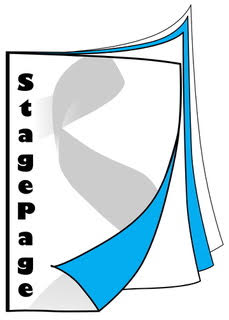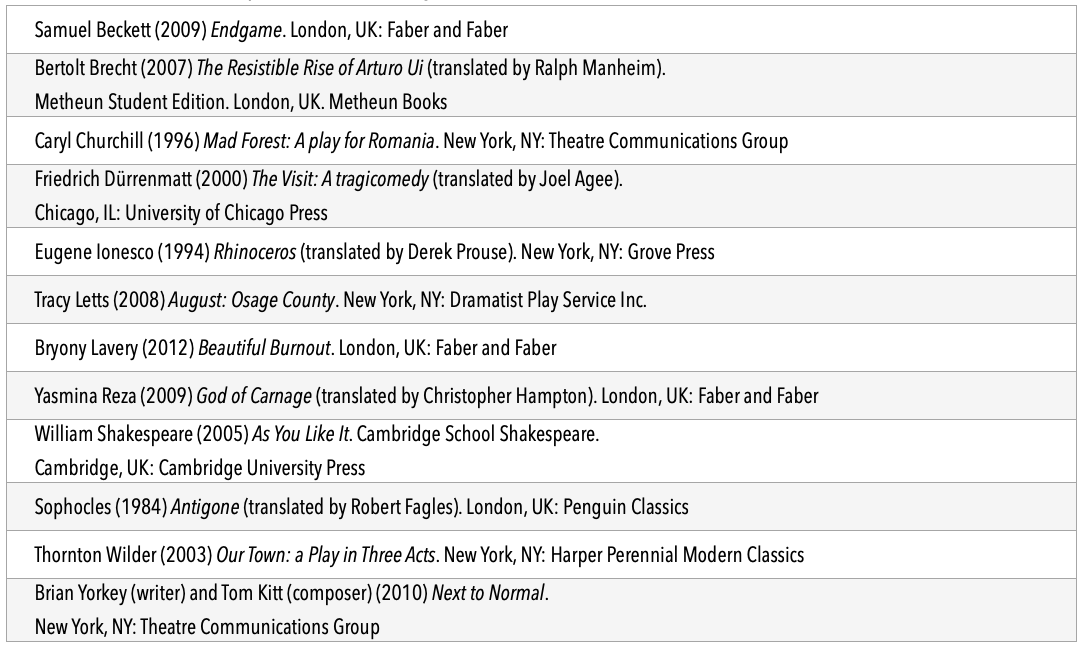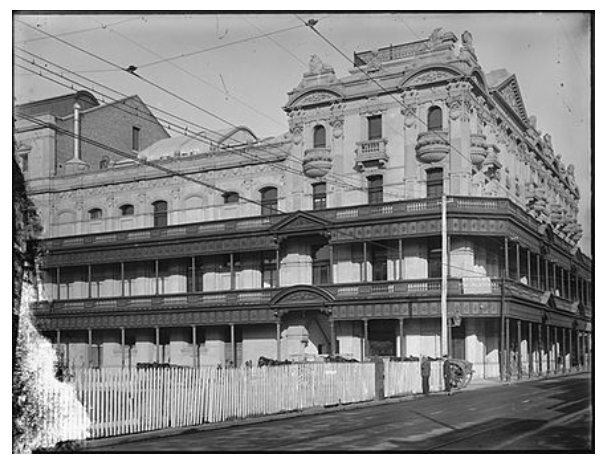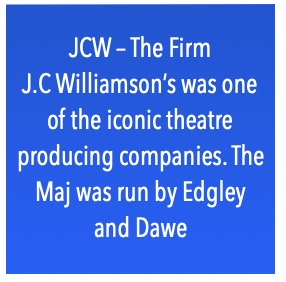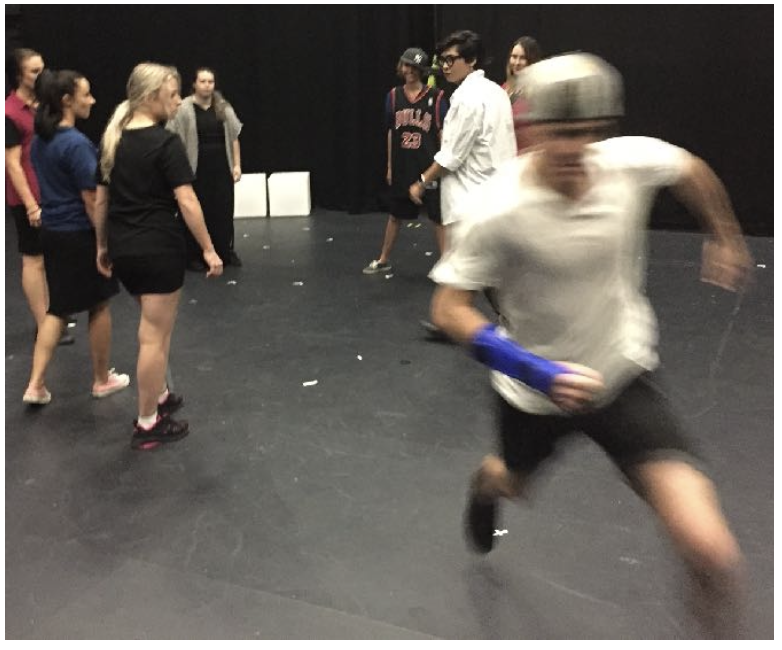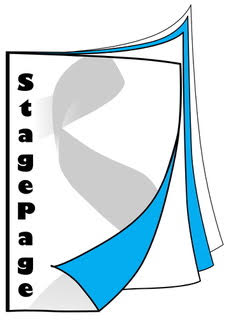In case you haven't noticed, the ways young people tell stories are changing. The stories are none the less important nor the telling of them. But the influences of video clips, MTV, interactive multi-media, television and other advertising, new and evolving technologies, are re-shaping both the ways young people make sense of the world and the ways they express themselves.
Old hierarchies and orthodoxies are breaking down, new technologies make fresh links and connections, find new pathways; topics, themes and points of view are different; there are marked shifts back and forth along the objectivity-subjectivity continuum; the process of telling the story is as important as the story artefact. There's a useful image doing the popular rounds at the moment - surfing in hyperspace and that is an apt image for the process of developing an original piece of youth theatre for the 1995 Festival of Perth, called somewhat enigmatically: Here! Now!
This joint project of the Leeming Youth Theatre, WA Youth Jazz Orchestra and STEPS Youth dance Company has been an example of some of these key elements. Bringing together young people from three different but related backgrounds was only the beginning of a sustained collaboration.
Over almost eighteen months, participants have been asked to work from within their own discipline to reach out and make connections with other arts forms: dancers to use their voices as well as their bodies, actors to move, musicians to act and move. But more significantly, the process has focused on young people taking a driving role in the creation of the work. Ideas
have been sifted, explored, developed and shaped by the collective work of the members of the collaborative ensemble. The role of the adults collaborators - director, musical director, collaborator and dramaturgs - has been shaped by the driving wave of the ideas of young people.
To make a judgement about this project - and its short and long term effectiveness - we need to make a shift to a different frame of reference. This work has given rise to the awkward but accurate buzz phrase of the moment is "hybrid arts". While there's always a danger of overstating early trend signs, the work on the stage (can we even use that term any more?)
reflects a significant perceptual shift in story. There are implications for education. There are implications for the Arts. The process has been as fascinating as any product on the stage. The impact of the process on the dramatic text is notable. There is that crowding of ideas, conflicting values, elisions of narrative, experimentation with type, archetype and cliche characters from soap opera and worse.
All involved have had to acknowledge and incorporate the ideas, values and limitations of an empowered group of young people. This has meant an intrinsically different way of working. As young people have been asserting their voice, style and approach to the product, the process has shifted from a hierarchical (sometimes seen as masculine) way of working to a collaborative approach. Writers, dramaturges and: directors have had to come to terms with different ways of working, different ways of telling , different forms and structures of narrative. As young people have been empowered b y the process, there has been a serious re-evaluation of the creative partnerships between adults and young artists. This sort of empowerment will lead to a questioning of the traditionally power laden role of the director - and teacher as director.
Can these young people ever go back to the theatre where actors are cattle (to remind us of Hitchcock's famous quip?.
What is the role of the actor in the creation of the dramatic text?
What is now the role of the writer and what are the limits and frustrations that are placed on that role?
Can we ever again see the playwright as arbitrator on all matters as we find in the, say, the proscriptive and rather quaintly literary scripts of a George Bernard Shaw?
Can the drama class be a tabula rasa for the teacher to scrawl and experiment on?
Are drama students to be manipulated and pushed around?
In short, the obvious answer to these questions is no. There has been a significant paradigm shift. The debate that still needs to be faced centres on the question of whether this shift in thinking is desirable, general, irreversible? How will drama courses look if this empowerment of the ideas and values of young people is a general shift? What happens if there develops a number of approaches - ones that favour empowerment and ones that retain a dominant (writer/ director/ etc) and subservient role (the sort of master-student relationship so often seen in the traditional approach in the ballet studio)? What will happen when this generation of young actors enters the profession and runs headlong into that other tradition? Is this case being overstated? What are the limitations of the student actor as writer/creator/participant, controller of the creative text that emerges? Is there sufficient aesthetic distance m the process to enable ideas to be taken in, massaged, developed and realised.
What is happening in terms of the art of story is even more fascinating. The nature of story 1s changing m the face of many pressures. Dramatic texts such as Here!Now! reflect these shifts. By nature, the story is now more dynamic - in jargon terms, it is more interactive: the participants in the process have a role in the creation of meaning and the manipulation of what happens. The days of the "sanctity" of the text are numbered. As reader response theorists win the hearts and minds battle for education, so too do the ways stories are told by young people.
This is a (if not “the') cutting edge of narrative. When people try to apply different more traditional frames of reference, they find themselves confounded or perplexed or even confronted. To a mind set brought up on the well-made story, crafted and honed and even elegant, the roughness and unfinished qualities of stories like Here!Now! are questioned - perhaps even an anathema. But, it is timely to remember Peter Brook's exhortation to rough theatre where immediacy is more important than finish.
If you make an analysis of Here/Now! it is a thin narrative - that is not to say that there is not a throughline or characterisation or resolution of those characters and situation. But it is thin. The narrative can be simply stated:
Styx loses Stephanie to Kirby; there are those inside and those outside; those inside have the illusion of safety and those outside carry threat, but appearances are not reality.
It is a play on the old idea of the musical: boy loses girl; girl gets other boy; first boy is proven right but no one wins the girl. The nature of the throughline is different - there is the use of repetition, extension and variation, and time manipulation that breaks through
expectations of linearity and perplexes. But there is a narrative line, it is simply not the same complex throughline of drama from other perspectives. Does this make it any less satisfying or complete? Perhaps. I also makes it different and underlines the need to approach all drama with a clear understanding of its contexts. The judgements we then choose to make should be, at least, informed.
The depth of the narrative lies in the implicit complexity, not the apparent complexity. The narrative alludes to mythology but doesn't explain it; the action accepts concepts such as street kids, drug culture, etc rather than explains or fleshes them out as if the audience might have difficulty understanding them. These elisions in narrative structure are a problem for people who want to a spoonfed television generation who need resolution in a short time frame.
The dynamic of the group devised piece is different from the well-made play penned by the dominant playwright (with maybe a partner) and delivered through _a traditional, hierarchic system. The group devising process shapes a different sort o! performance piece. Group devised plays are more anarchic, free-form, associational, energetic, tension ridden and driven. They produce narratives of different sorts, derived from within other frames of reference.
Is this just a sign of these particular times - this so called Generation X-ness?
Maybe~ !hough I suspect there are deeper and more interesting, a recognition of the shift ~rom the traditional generational impatience - once cutely called the generation gap - to a more significant expectation from young people, a demand and assertion that they have a right to be heard. As the century has passed there has been a drift towards a different perception
of youth as a concept. As inexorable commercial and media forces have created and invented teenager-hood, so there has been a corresponding growth and acceptance of the idea that this is not just natural and right but expected and mandatory.
The dialogue in this piece does reflect soap opera qualities. In its predictability and triteness there are some hints of the role models and values of the society of young people. In a so-called post modernist society, there is also a questioning of a need for dialogue to be original and novel; there is a reliance on tried and tested language patterns perhaps underlining a need for familiarity and safety in unsafe times. The attempts to heighten the language through the use of repetition, vocal patterning, chorus work and what some call poetic diction, is an interesting response to a world where that very soap opera predictability is the dominant mode. ( And, it is interesting to note how few commented on this aspect of the Here! Now! project!) But there is a tension in this dramatic text between the intention and the result is the dialogue and language simply a reflection of what exists or a questioning. Is this piece a mirror held up to reality? Or does it attempt - and perhaps fail - to be something else?
Similarly, in world where realism is the dominant form of story telling - through film and television - it is interesting to see plays where this approach is questioned. The disjointing of reality in this piece is notable.
Traditionally, fin de siecle society is typified as lethargy, longueurs, entropic looking back through rose or jaundice coloured glasses. By contrast, Here!Now! shows an energy, a commitment, even a fervour that questions such a mannered and stylised approach. When you see the sense of passion and diversity in the face of the blandness of life around them, you can understand the impatience and underlying anger. As the world around them becomes homogenised, globalised and generally duller - the economic imperatives driving the social fabric into designer but duller mass production, is it any wonder that there is a sense of rebellion fuelled by
anger.
When the dramatic text produced is examined closely, it is interesting to draw the parallels. with the ideas and values of playwrights/directors like Brecht who over fifty years ago was advocating a similar dislocation of the conventions of drama m search of awakening the audience. In Brechtian drama, there is a deliberate introduction of distancing elements such as songs, fragments and incompleteness, the use of music, stylised setting and properties, episodes rather than scenes, and a deliberate move away from seeking catharsis. Similar elements are strongly present in Here! Now!
Developing this line .of :thought about the Here! Now! project is not to turn a blind eye to its limitations. Questions I continue to ask include:
• Has _the project been so inward looking that it merely delivers another version of teenage angst?
• Has !here been a narrowing of perceptions to the known, the safely predictable?
• Have the choices made been a reconfirmation of existing prejudices or narratives rather than a genuine opening up of possibilities?
• Has the repetition, use of predictable dialogue and situations been a limiting rather than liberating factor?
• Could there have been a more satisfying approach to characterisation and narrative throughline?
The answers will vary according to your frame of reference.
Reaching towards some conclusions
Education is paradoxically both notoriously conservative and dangerously visionary - and often both at the same time. The Arts are also.
Is this production a sign of something new and visionary? Or is it a blind alley at a time of great societal uncertainty and upheaval.
It is appropriate that dramatic texts such as Here! Now! do question and debate traditional forms and ways of working. However, equally do we want to repeat the abject aridity of that great experiment of English without literature, language without enriched contexts?
While it sounds like having a two bob bet each way, there is a place for education to both affirm and question. In affirming the value of conservative approaches, education recognises the strengths of traditions and past contexts. In looking forward, we recognise that arts education is a powerful opportunity to engage with new technologies and ways of telling. If we don't recognise the past, we abdicate the long trajectory of learning. If we aren't involved in the debate about new ways of structuring, we don’t have the credentials - the street cred - to critique them.
The reviews and reactions of many to this project has been an interesting insight into the limitations of some of those looking - and perhaps, equally, of some of those participating and shaping. It is perhaps typical of this Generation X approach to leave the issue unresolved with a metaphoric and stereotypical, frustrating, youthful shrug of the shoulders. But we should not read this as a sign of disinterest. Behind the carefully cultivated veneer of the young, their apparent insouciant lack of caring is a passionate and burnmg need to be heard and understood. They simply cannot be dismissed. Projects such as Here! Now! have a place, a right and need to be taken seriously - from their own frames of reference.
4 April 1996
